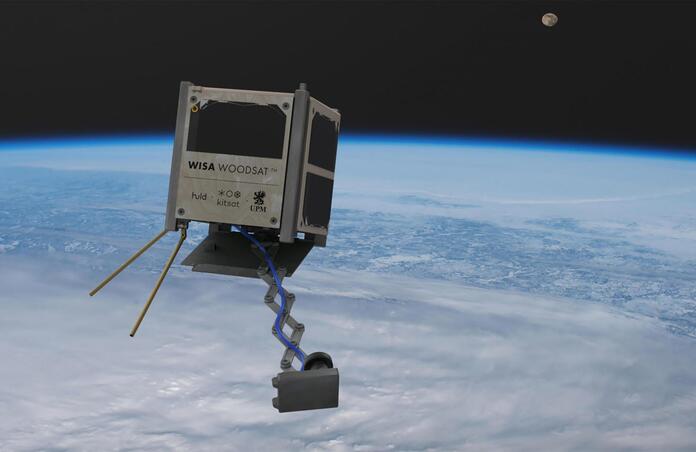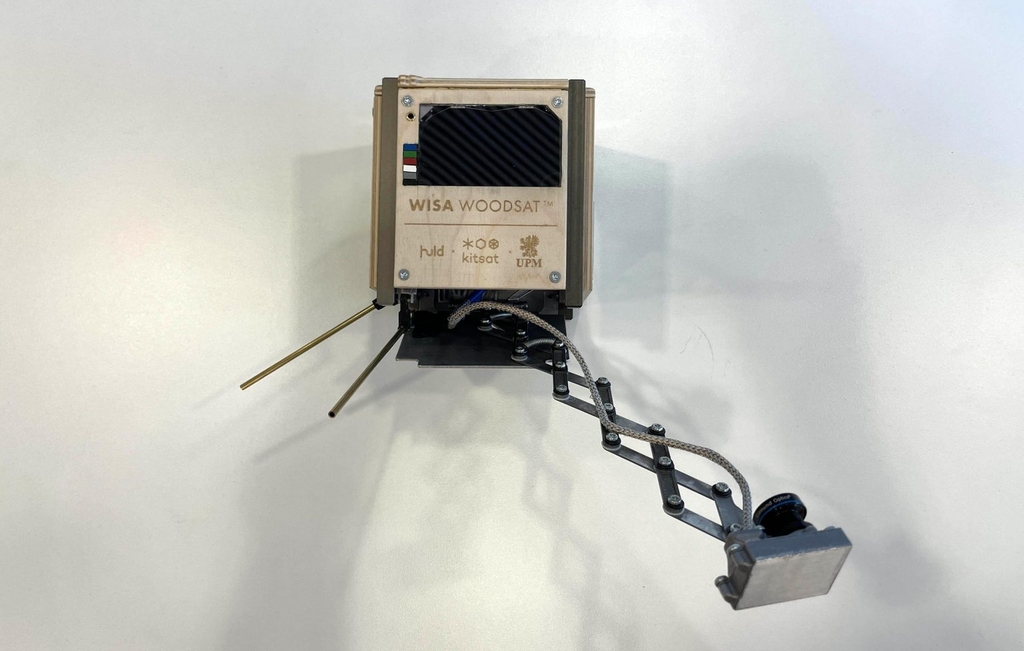World's First Wooden Satellite Set To Launch

You might remember from a previous article about innovations in the domain of satellites that building smaller devices is a significant research direction. Now, a Finnish team supported by the European Space Agency (ESA) is building a one-of-a-kind satellite: a wooden CubeSat, or WoodSat.
Although it is a low-cost, renewable material, the birch wood, transformed into the WISA plywood that composes the WoodSat, has to be treated in specific ways in order to survive its time in space. “Normal” plywood, like the one for furniture or in hardware stores, is too humid to be directly used in space, so a first step is to dry it out in a thermal vacuum chamber. Then, an extremely thin coat of aluminium oxide is deposited; this is done to avoid “outgassing” from the wood (a release of vapour trapped in the material), as well as to prevent oxygen erosion. The O2 molecules we know in “our” part of the atmosphere indeed get split into individual oxygen atoms in upper layers due to the effects of solar radiation, and this atomic oxygen easily degrades materials. Even so, the wood will be subject to the just mentioned Sun’s rays, especially ultraviolet rays, which is expected to cause it to darken over time.

This change in colour might be observed thanks to the on-board “selfie stick”. WoodSat will be accompanied by 2 cameras, one attached to a stick to be able to observe the satellite. As you can expect, it was very challenging to build a feature small enough to be folded inside the very compact satellite and then able to unfold and deploy to a sufficient length to take photographs of the whole instrument. But Finnish engineering company Huld, at the forefront of 3D-printing technology, has achieved just that.

Pupils assembling a KitSat 
Flying KitSat over Lapland
The whole idea originated from the combination of the company Arctic Astronautics' KitSat project and project manager Jari Mäkinen’s passion for wooden model aeroplanes. KitSat is a CubeSat specifically made for educational uses: pupils can assemble the satellite from the kit - hence the crafts’ name - and fly it all the way up to the stratosphere with a meteorological balloon. One of Jari’s main motivations in developing the WoodSat is to make people engage with what’s happening with the space sector, especially considering the importance satellites have taken in terms of, e.g., everyday communications. Another noteworthy consideration is that satellites are made to re-enter the atmosphere at the end of their missions, which typically leaves toxic substances and can sometimes cause debris to not burn up and fall back on Earth. With a satellite whose structure is made out of wood, the risks are evidently reduced.
A WoodSat has achieved a stratospheric flight on the 12th June, reaching an encouraging milestone as it is hoped that the first WoodSat will be launched from New Zealand before the end of the year. More organic materials that are tested for space use include cork for NASA's new heavy-lift rocket, the Space Launch System (SLS), or a Japanese wooden satellite, to be ready in 2023.
All image credit to Arctic Astronautics/ESA
